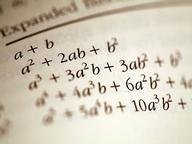Quiz Answer Key and Fun Facts
1. How do you add matrices?
2. How do you multiply matrices?
3. How do you divide matrices?
4. Row-reduction, also know as Gauss-Jordan Elimination, can be used for which of the following?
5. Finding the inverse of a matrix involves augmenting the matrix by the identity matrix and performing row reduction until
6. This matrix operation tells you whether or not the matrix is invertible. It is also useful for telling you area change during linear transformations, finding eigenvectors, and using Cramer's Rule to solve equations.
7. So now that you know the matrix operations, how about a few examples before we move on? Find the determinant of:
[3 -5] [-2 4]
[8 -1]+[-7 0]
8. Solve this system:
2x-4y+6z=10
y+ z=-2
x+2y+3z=-3
9. For any given matrix A, any vector x such that Ax=0 is said to be in the ________ of A, and all linearly independent column vectors of A are said to make up the _________ of A.
10. For any given 3x3 matrix the dimension of the kernel (number of vectors in the kernel) is the same as the dimension of the image (number of vectors in the image).
Source: Author
redsoxfan325
This quiz was reviewed by FunTrivia editor
crisw before going online.
Any errors found in FunTrivia content are routinely corrected through our feedback system.

